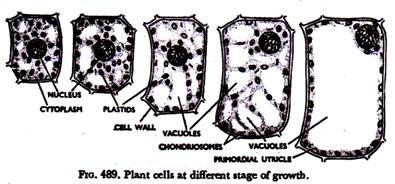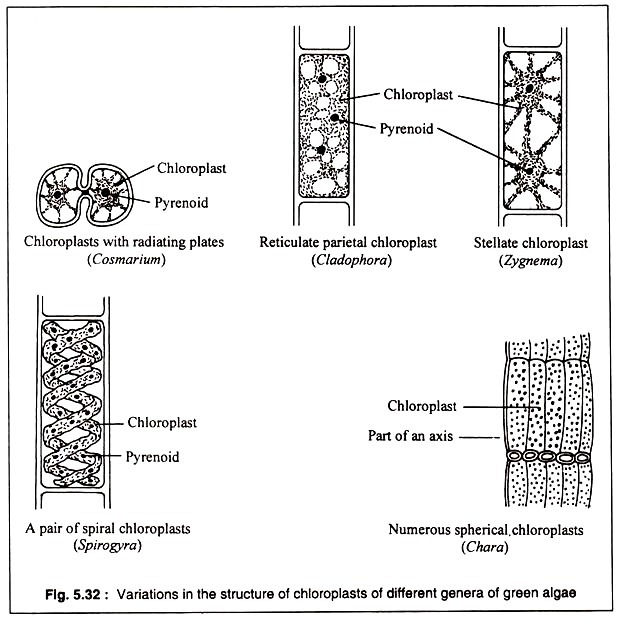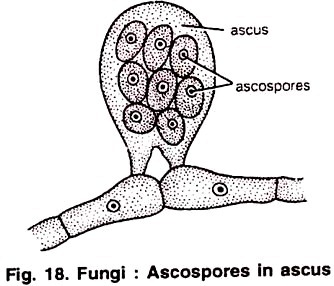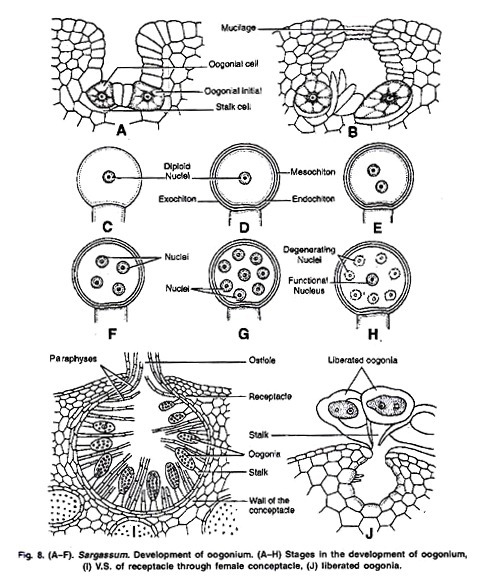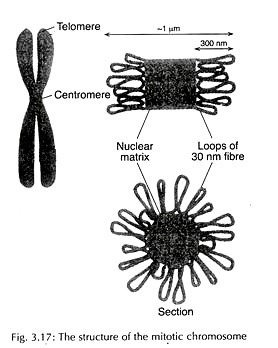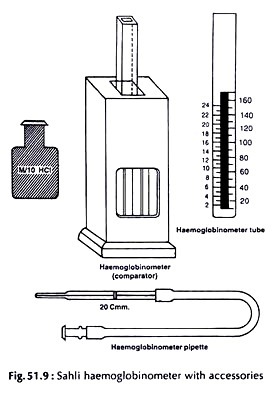ADVERTISEMENTS:
Let us make an in-depth study of endocrine glands and hormones produced by it.
In addition to these major glands, there are other few minor endocrine glands like the pineal gland, the thymus gland, placenta, kidney, corpus leutum etc. The hypothalamic part of the central nervous system on receiving suitable information from the environment or other parts of the body produces the hormones known as the ‘release factors’ which pass through the hypophyseal-hypothalamic portal vein to the master endocrine gland the pituitary gland. This master gland produces the respective tropic hormone in response to the release factor.
ADVERTISEMENTS:
The tropic hormone will then stimulate another endocrine gland which will produce the specific hormone required for the action as per the information received by the CNS. This specific hormone or target hormone will finally act on the target tissue or the target cell.
Classification of hormones:
ADVERTISEMENTS:
The hormones are divided into four classes—
1. Peptide hormones:
All the hormones of the hypothalamus, pituitary, G.I. mucosa, and pancreas.
2. Steroid hormones:
The hormones of adrenal cortex and gonads.
3. Catecholamine’s:
Epinephrine and norepinephrine.
4. Thyroid hormones:
Thyroxine and triiodothyronine.
Hypothalamus:
All the hormones of the hypothalamus are peptide hormones and they are known as release factors of releasing hormones. Their function is to stimulate the production of anterior pituitary hormones. Each of the anterior pituitary hormones has its own release factor ex. ACTH has ACTH-release hormone.
ADVERTISEMENTS:
The neurons of the hypothalamus produce two hormones:
(1) Oxytocin
(2) Vasopressin or Antidiuretic Hormone (ADH).
ADVERTISEMENTS:
The neurons extend to the posterior lobe of the pituitary where these two hormones are stored in the nerve endings. Neurophysin help in the transport of these hormones from hypothalamus to the posterior pituitary (Neurophysin I and II are proteins).
Anterior Pituitary:
It is the master gland and controls the activities and development of other endocrine glands. The hormones produced by the anterior pituitary are known as tropic hormones. These are the hormones that stimulate the respective glands ex Thyrotrophic hormone stimulates the thyroid gland for the production of thyroid hormones.
Growth hormone and prolactin do not act as tropic hormones; instead they act as the target hormones.
Growth Hormone (GH):
It is a protein made up of 191 amino acids having a molecular weight of 22,000 Da. It has two disulphide bridges.
ADVERTISEMENTS:
Stimuli:
Sleep, stress, exercise, low blood glucose, high amino acid content in blood and starvation.
Actions:
ADVERTISEMENTS:
1. It stimulates protein synthesis by enhancing amino acid uptake by the cells (this results in a positive nitrogen balance).
2. It helps in the retention of phosphorous, potassium, sodium and calcium.
3. It enhances lipolysis by accelerating the mobilization of fat from adipose tissue resulting in increased oxidation of fats in liver and muscle.
4. It inhibits glucose uptake by the extra hepatic tissue (hyperglycemic effect).
5. It increases liver glycogen by enhancing glycogenesis (via gluconeogenesis).
6. It stimulates the production of somatostatin (which aids in sulphur addition to cartilage, therefore GH is also known as somatotropin). This somatostatin in-turn inhibits the release of GH.
ADVERTISEMENTS:
(7) It increases synthesis of DNA and RNA in the tissues.
(8) It enhances erythropoiesis.
(9) It stimulates the growth of somatic tissue by enhancing the growth of cartilage; chondrogenesis and oesteogenesis.
Disorders:
Excess production of GH in childhood results in gigantism, wherein the person shows a giant like appearance with abnormally long hands and legs. Excessive production of GH after the usual age of full skeletal growth results in acromegaly and is due to a tumor of the adenohypophysis. The characters of acromegaly are broadened skull, hands and fingers. The soft tissue of the nose, lips, forehead and scalp are thickened. Hypo secretion of GH results in dwarfism. It is characterized by short height, but fully developed mental and sexual ability.
Prolactin:
Lactogenic Hormone and Mammotropin:
ADVERTISEMENTS:
It is a protein hormone with 199 amino acids having a MW of 23,000 Da. There are three intrachain disulphide bridges.
Stimuli:
Pregnancy, nursing or breast stimulation, sleep and stress.
Actions:
1. Effects on breast:
Development of the mammary tissue, production of milk (lactogenic) and ejaculation of milk.
2. Amenorrhea effect:
It has an amenorrhea effect (absence of menses) on the reproductive system. Therefore breast feeding serves as a contraceptive method.
3. Effect on corpus luteum:
It activates the corpus luteum and stimulates production of progesterone by the developed corpus luteum.
Excess:
The excessive production of prolactin results in amenorrhea, galactorrhea (unnecessary discharge of milk) and enlargement of breast.
Posterior Pituitary:
Oxytocin:
(Greek: Rapid birth)
Chemistry:
It is a nona-peptide (9 amino acids) with a disulphide (-S-S-) bridge between 1st and 6th cysteine amino acids. Union of these two cysteine molecules thus give rise to one cystine molecule hence it also considered as octa-peptide (8 amino acids).
Stimuli:
1. The neural impulses from the stimulation of nipples (termed as milk let down response).
2. Vaginal and uterine contractions (leading to rapid birth).
3. Estrogen stimulates oxytocin production whereas progesterone inhibits its production.
Actions:
1. Causes contraction of uterine smooth muscle at the time of child birth.
2. Stimulates the ejaculation of milk by producing constriction of specialized myoepithelial cells.
3. Helps in the movement of spermatozoa in the female reproductive tract.
Vasopressin or Antidiuretic Hormone (ADH):
It is a nona-peptide (9 amino acids) with a disulphide (-S-S-) bridge between 1st and 6th cysteine amino acids. These two cysteine molecules unite thus giving rise to one cystine molecule hence it also considered as octa-peptide (8 amino acids).
Stimuli:
1. The osmotic pressure of the plasma, also known as oncotic pressure is the primary stimuli for the release of ADH. If the plasma is hypertonic then there is increased secretion of ADH. If the plasma is hypotonic the secretion of ADH is suppressed.
2. Low blood volume
3. Hypotension (low blood pressure)
4. Emotional stress
5. Drugs like nicotine
Actions:
1. It increases the rate of water re-absorption from the latter part of the distal convoluted renal tubules and collecting ducts (antidiuretic effect). This mechanism is adapted to control dehydration and to compensate the excess salt intake.
2. It causes constriction of smooth muscle, leading to the constriction of arteries and capillaries (vascular system). Due to the action of ADH as a vasoconstrictor it results in an increase in the blood pressure.
3. It is an inhibitor of gonadotropins especially LH.
Pathophysiology:
Under production of ADH leads to diabetes insipidus. This is characterized by increased excretion of dilute urine. Normal excretion of urine is 1500 ml/day. In diabetes insipidus it rises up to 6 to 20 1/day. The condition is known as polyuria. This results in thirst leading to increased water intake.
The low secretion of ADH may be due to lesions of hypophysis or hypothalamus or due to non-responsiveness of nephrons in the kidney, known as hereditary nephrogenic diabetes insipidus. Alcohol inhibits the release of ADH thereby causing diabetes insipidus. Overproduction results in water retention and hyponatremia.
Thyroid Gland:
It is a pair of glands situated on either side of the trachea. The development and secretion of the thyroid gland is controlled by TSH.
Thyroid Hormones:
The hormones secreted by thyroid are (1) Thyroxine (T4) & (2) Triiodothyronine (T3). Synthesis of thyroid hormones: The thyroid hormones are synthesized from tyrosine in presence of iodine. Plasma contains iodine ion (I–), which is taken up by the thyroid gland by an active transport mechanism, against the concentration gradient through Na+, K+-ATPase pump, which requires energy. In the gland, iodide is converted to active iodine (I or I+) by the action of an enzyme thyroperoxidase which requires hydrogen peroxide.
In the thyroid gland there is a glycoprotein called thyroglobulin, Mw-660,000 Da, containing 5000 amino acids among which 140 are tyrosine residues. The tyrosine residues of this protein are iodinated to form T3 and T4.
The steps of their synthesis on the protein are:
Out of the 140 tyrosine residues of the thyroglobulin some will be in the form of tetraiodothyronine, some will be in the form of triiodothyronine and some in the form of diiodotyrosine and monoiodotyrosine. On stimulation with TSH the thyroglobulin is hydrolysed by proteolytic enzymes in the lysosomes and the free amino acids are released. The T4, T3, T2 and T1 released will enter the blood stream. T1 and T2 are taken back by the thyroid gland.
T4 and T3 are transported through the blood to the target tissue by thyroxine binding globulin, prealbumin (transthyratin) and albumin. In the target tissue T4 i.e. 3, 5, 3′, 5′- tetraiodothyronine is converted to T3 i.e. 3, 5, 3′- triiodothyronine and some to reverse T3 i.e. 3, 3′, 5′- triiodothyronine. Only T3 is the active species. The thyroid hormones are inactivated upon oxidation to triiodothyroacetic acid and finally de-iodinated.
Functions of thyroid hormones:
The target organ or tissues of thyroid hormones are almost all the tissues:
1. They stimulate Na+K+-ATPase thereby increasing the rate of oxygen consumption and heat production—BMR (except gonads, spleen and adult brain).
2. They increase the metabolism of carbohydrates, fats and proteins.
3. It causes increased absorption of glucose from intestine. It increases glycogenolysis in liver and muscle. It promotes gluconeogenesis. (Hyperglycemic effect).
4. It increases RNA synthesis, amino acid transport and protein synthesis.
5. In hypothermic conditions it uncouples oxidative phosphorylation by swelling mitochondria thereby producing heat.
6. They enhance the growth and development of many tissues; due to enhancement of protein synthesis by thyroid hormones.
7. It aids in the conversion of β-carotene to vitamin A.
Pathophysiology:
1. Hypothyroidism: It is a condition wherein there are insufficient amounts of T3 & T4. This may be due to (a) disease of thyroid gland (failure) or (b) disease of pituitary/hypothalamus or (c) deficiency of iodine.
In children:
Hypothyroidism results in cretinism, characterized by dwarfism, thick tongue and skin mental retardation and sexual un-development.
In adults:
Hypothyroidism results in myxoedema, which is characterized by thick, dry and waxy skin, dull mental ability and high sensitivity to cold.
In all the cases of hypothyroidism BMR is low (—20 to —40%) and hypercholesterolemia is seen. T3 and T4 administration is the only remedy.
2. Hyperthyroidism or thyrotoxicosis:
It is due to excessive production of thyroid hormones. Main cause is tumor of the gland.
Grave’s disease:
This is due to long acting thyroid stimulator (LATS) and LATS protector, which act similar to that of TSH resulting in over production of thyroid hormones due to which BMR increases (+20 to +80%), there will be loss of weight, increased heart rate, inability to sleep etc.
Treatment:
Anti-thyroid drugs control Grave’s disease.
Ex. (1) Thiocyanate, perchlorate and ouabain—inhibit iodine uptake by the gland.
(2) Thiourea and thiouracil—inhibit thyroperoxidase.
Goiter:
Enlargement of thyroid gland is called goiter. It is due to (1) deficiency of iodine (2) tumors of thyroid (3) excess of TSH and (4) LATS.
Exophthalmic goiter:
It is the bulging of the eyeballs out of the face, which is also due to hyperthyroidism.
Parathyroid Gland:
A pair of glands present just behind the thyroids.
Parathormone:
They produce the hormone called parathormone or parathyroid hormone (PTH). It is a polypeptide of 84 amino acids with molecular weight of 9500 Da. It is synthesized as a pre-pro-hormone which is converted to pro-hormone by removal of 25 amino acids from the N-terminal end. Finally parathormone is formed by the removal of 6 more amino acids. It is secreted when blood calcium is low. Its secretion is inhibited when calcium is high in the blood. The target organs for parathormone are bone and kidney.
Functions:
1. Raises serum calcium by:
(a) Formation of calcitriol in the kidney, which helps in the absorption of Ca2+ from the intestine.
(b) Mobilization of Ca from the bones.
(c) Reducing the excretion of calcium by the kidney.
2. Decreases serum phosphate by increasing its excretion by the kidney.
Calcitonin:
It is a hormone produced by the thyroid gland having 32 amino acids. It prevents the movement of Ca2+ from bone; it causes phosphate deposition in the bone and prevents phosphate excretion by the kidney. Therefore it is known as the parathormone antagonist.
Hypoparathyroidism:
It occurs due to the accidental removal of parathyroid during neck or thyroid surgery. It can also occur due to auto-immune destruction of the gland. The resulting condition is known as tetany—due to which there is neuromuscular irritability and hypocalcemia.
Hyperparathyroidism:
Occurs mainly due to tumors of the gland. It results in high serum calcium, low serum phosphate, bone destruction and kidney stones.
Pancreas:
The islets of Langerhans of the pancreas function as the endocrine cells. The alpha cells produce glucagon, beta cells produce insulin, D & F cells produce somatostatin and pancreatic polypeptides respectively.
Insulin:
It is a polypeptide with a molecular weight of 5734 Da. It is made up of two chains, chain ‘A’ having 21 amino acids and chain ‘B’ having 30 amino acids.
There are two inter-chain disulphide bonds (1) between A7 & B7 and (2) between A20 & B19. There is one intrachain disulphide bond in A chain between 6th and 11th amino acids.
Insulin is synthesized as a preproinsulin which is converted to pro-insulin by the removal of 23 amino acids from the N-terminal end. Pro-insulin is the inactive storage form of insulin which contains an additional ‘C’ chain containing 35 amino acids. Active insulin is formed due to cleavage of ‘C’ chain from pro-insulin by proteolytic enzymes.
Stimulation for insulin secretion:
High blood glucose, amino acids, fatty acids, ketone bodies and hormones like glucagon, GH, Cortisol etc. Epinephrine inhibits insulin secretion by decreasing cAMP.
Target cells:
The target cells for insulin action are mainly muscle, liver and adipose tissue. Other cells like lymphocytes, fibroblasts and mammary glands are also acted upon by insulin. It can be said that almost all the cells of the body are dependent upon insulin for uptake of glucose except brain, RBC, G.I tract, liver, retina of eye and pancreas itself.
Actions or effects of insulin:
1. Helps in the transport of glucose, amino acids, K+, Ca2+, P and nucleotides through the cell membrane.
2. It enhances the utilization of glucose by the cell by activating the enzymes of energy production (glycolysis) and of energy storage (glycogenesis and lipogenesis).
3. It inhibits the enzymes of glucose production in the cells (gluconeogenesis).
All the above three mechanisms affect in lowering the blood glucose level (i.e. hypoglycemic effect).
4. It inhibits lipolysis.
5. It stimulates HMP shunt pathway resulting in production of NADPH for lipid synthesis.
6. It enhances protein synthesis.
Inactivation and degradation of insulin:
1. The hormone-receptor complex is taken up by the lysosomes of the target cells and proteolysis occurs.
2. In liver glutathione-insulin trans-hydrogenase reduces the disulphide linkages with reduced glutathione and thereby separating the A and B chains. The A and B chains are then cleaved by insulinase enzyme.
Hyperinsulinism:
Excessive production of insulin, mainly due to the tumors of the (3-cells which results in hypoglycemia associated with sweating, tremors, fainting attacks. This can be relieved by injecting glucose or by oral supply of sugar.
Glucagon:
It is a peptide of 29 amino acids having a molecular weight of 3485 Da. It is known as Hyperglycemic-Glycogen lytic Factor (HGF). It is secreted by the a-cells of the islets of Langerhans in the pancreas. Hypoglycemia stimulates its production. It acts by activating hepatic adenyl cyclase thereby promoting glycogenolysis. It inhibits protein synthesis, fatty acids and cholesterol synthesis.
It promotes gluconeogenesis, lipolysis and ketone body formation. Overall, it has hyperglycemic effect. Hyperglucagonism antagonizes the insulin action thereby causing hyperglycemia i.e. diabetes mellitus. Hypoglucagonism results in hypoglycemic convulsions and shock exhibiting sweating, shivering or fainting. It is inactivated in the liver by glucagonase.
Adrenals:
Adrenal glands are a pair of glands situated on the dorsal side of the kidney. Each gland is a composite of two structures (1) Adrenal medulla and (2) Adrenal cortex.
Adrenal Medulla:
They arise from the autonomic nervous system. The cells of the adrenals are called pheochromocytes or chromaffin cells (due to dichromate staining).
Catecholamine’s:
The hormones produced by the adrenal medulla are known as catecholamine’s. They are—(1) Epinephrine (adrenaline) (2) Norepinephrine (nor-adrenaline). These are synthesized from tyrosine and are stored in the chromaffin granules. Neural stimulation as a result of stress, fear, anger, exercise and hypoglycemia results in the secretion of these hormones. They circulate in plasma in free form or in loose association with albumin.
Receptors:
The receptors for catecholamine’s are known as adrenergic receptors. They are of two types viz. (1) Alpha (α-1 and α-2) and beta (β-1 and β-2). Epinephrine acts through the alpha and beta receptors whereas norepinephrine acts only through the alpha receptor. They act mainly by varying the cAMP level.
Actions:
1. It enhances glycogenolysis in muscle and liver by activating adenyl cyclase.
2. It enhances gluconeogenesis.
3. It diminishes the glucose uptake by the cells, except brain and RBC.
4. It inhibits the secretion of insulin by lowering the cAMP.
5. It enhances lipolysis in adipose tissue.
6. It increases the blood pressure (by vasoconstriction and increasing the rate and force of contraction of heart).
7. It increases BMR.
8. It is a smooth muscle relaxant.
The catecholamine’s are produced under a threat and help the body in fighting against it by supplying fuel (glucose to brain and fatty acids to other tissues). This is known as fight or flight mechanism.
Metabolism and excretion:
In the liver they are metabolized by Catechol-O-Methyl-Transferase (COMT) and Mono-Amine Oxidase (MAO) to form O-methylated and deaminated metabolites (Ex. Vanillylmandelic acid—VMA which is the major excretory product of catecholamine’s).
Pathophysiology:
Tumors of the adrenal medulla cause excessive production of catecholamine’s resulting in hypertension. The condition is known as pheochromocytomas.
Adrenal Cortex:
It surrounds the adrenal medulla.
Corticosteroids:
The hormones produced by adrenal cortex are known as steroids or steroid hormones, as they contain the parent ring the cyclopentano-per-hydro-phenanthrene ring. It produces—
(1) Glucocorticoids → Cortisol, Corticosteroids
(2) Mineralocorticoids → Aldosterone
(3) Sex Hormones → Androgen
These are synthesized from cholesterol, which is the first precursor of steroid synthesis. The development of adrenal gland is under the control of pituitary ACTH. It also regulates the synthesis and secretion of glucocorticoids. ACTH helps in the transport of cholesterol into the mitochondria where it is converted to pregnenolone. The synthesis of mineralocorticoids is regulated by renin-angiotensin system which changes the intracellular calcium level (increases) due to which the synthesis of aldosterone is stimulated.
Renin-angiotensin system:
Renin, an enzyme, produced by the kidney, in response to low fluid (blood) volume and low sodium concentration, converts angiotensinogen, a protein produced by the liver to angiotensin-I which is converted to angiotensin-II by a converting enzyme. This angiotensin-II increases the intracellular calcium level thereby stimulating the aldosterone production. Angiotensin-II is a potent vasoconstrictor due to which the blood pressure increases. Angiotensin is inactivated by angiotensinases.
The cortical hormones are released immediately after the onset of sleep and their concentration reaches a maximum level in the morning. The cortical hormones circulate in the blood bound to Corticosteroid-Binding-Globulin (CBG) or transcortin.
Functions of cortical hormones (glucocorticoids):
1. It enhances gluconeogenesis.
2. It enhances glycogenesis, thus prepares the subject for increased survival and resistance to stress.
3. It releases amino acids from proteins of extra-hepatic tissues and thus provides a substrate for gluconeogenesis.
4. In some parts of the body it enhances lipogenesis whereas in others it suppresses lipogenesis.
5. It facilitates protein formation in the liver but protein degradation in muscle, adipose tissue and skin.
6. All the above actions are in part mediated by other hormones, whose release is facilitated by the steroid hormones.
7. Effects on immunity: Cortisol and certain synthetic steroids prevent or reduce inflammatory responses to physical, chemical or bacterial stimuli. This action serves as the basis for their use in treating a variety of inflammatory or immunologically mediated disorders. However, the response to infection is also reduced and this represents a significant drawback to their use.
Mineralocorticoids:
They play a role in the retention of sodium, by facilitating the reabsorption of sodium from the distal convoluted tubules and collecting tubules of the kidney, in exchange of K+, H+ and NH4+. They also help in the retention of water.
Androgens (sex hormones):
1. If the androgens are present in excessive amounts, they lead to masculinization in females.
2. Adrenal cortex also produces estrogens and progesterone’s in small amounts.
Pathophysiology:
Hyper function of adrenal cortex:
Tumors of adrenal cortex produce hyperadrenocorticism.
This results in—
1. Hyperglycemia and glycosuria
2. Retention of sodium and water resulting in oedema and hypertension
3. Negative nitrogen balance
4. Hypokalemia and
5. Hirsuitism (Opposite sex characters).
6. Cushing’s syndrome: Tumors of pituitary or adrenal result in obesity involving the face, neck and trunk known as buffalo type.
Hypo function of adrenal cortex:
It may be primary or secondary (pituitary). Clinical syndrome is Addison’s disease. Excessive sodium and chloride loss, low blood pressure, hypoglycemia, and general weakness are some of the symptoms. Inability to face minor stress resulting in “crises and death” is also a symptom exhibited. Metabolism and excretion of cortical hormones: In the liver they are reduced to their tetra hydro derivatives and then conjugated with glucouronic acid and excreted through bile.
Gonads:
The gonads constitute the testis in males and the ovaries, corpus luteum and placenta in females.
Testis:
Testosterone is the major hormone produced by the testis.
Testosterone:
It is a 19 carbon compound. It is synthesized from cholesterol and pregnenolone is an intermediate in its synthesis. The synthesis and secretion of testosterone is controlled by LH and FSH (GTH). In the blood it is transported bound to Testosterone Estradiol Binding Globulin (TEBG) or Sex Hormone Binding Globulin (SHBG). In the target tissues, testosterone is converted into its active from i.e. dihydrotestoster- one by the enzyme NADPH-5-α-reductase.
Functions:
1. It causes sex differentiation during foetal life.
2. It promotes the growth and function of the epididymis, vas deferens, prostate, seminal vesicle and penis.
3. It enhances spermatogenesis in adulthood.
4. It enhances and maintains the motility and fertilizing power of the sperms.
5. It favours development of secondary sexual features.
6. It is responsible for the male pattern behaviour.
7. It increases the secretion of sebaceous glands in the skin.
8. It has protein anabolic effect.
9. It depresses the estrogenic over activity in women with symptoms of dysmenorrhoea, painful breasts and stops lactation and menstruation.
10. It increases the activity of glycolytic enzymes.
11. It increases the rate of fatty acid synthesis.
Metabolism and excretion:
In the liver it is converted to androsterone and then conjugated to form glucosiduronide and sulfate conjugates which are excreted in bile and urine.
Lack of male hormones:
Primary (testis defective) or it can be secondary (pituitary defect) results in failure to develop secondary sex characters, lack of musculinization, atrophy of sex organs in later life.
Ovaries:
They produce estrogens and progesterone.
Estrogens:
The most active estrogen is 17-beta-estradiol.
Synthesis and secretion of estradiol is controlled by GTH in addition to various other factors (FSH). In blood it is transported bound to SHBG.
Functions:
1. Growth and maturation of female sex organs and maintenance of the reproductive capacity.
2. Stimulate the growth of follicles.
3. Increases the blood flow and transudation of water.
4. Increased cell division.
5. Regulates bone development (i.e. it stops bone development after a certain time (age) therefore females are shorter than males).
6. They regulate normal bone metabolism. Women after menopause develop osteoporosis.
7. It has a lipogenic effect (i.e. deposition of subcutaneous fat-a female’s ankle is identified by its roundness due to disposition of subcutaneous fat).
8. It increases the level of HDL and LDL, thus prevents atherosclerosis. This is the reason why the incidence of heart attack is low in women compared to men.
9. It diminishes the sebaceous glands secretions.
Metabolism and excretion: Estradiol is converted to its inactive forms estrone and estriol which are conjugated to glucouronate and sulphates and finally excreted through bile and urine.
Progesterone:
It is produced by corpus leutum. During pregnancy it is also produced by the placenta. It is synthesized from cholesterol. It is also formed in the adrenal cortex as a precursor of corticosteroids. It circulates in the blood bound to Cortisol binding globulin or transcortin.
Actions:
1. Acts on endometrium and helps in implantation of the fertilized ovum.
2. Helps in the growth of the breast.
3. It increases the BMR.
4. High concentradons of progesterone inhibit ovuladon and hence it is used as a contraceptive.
5. It has a lipotropic (i.e. clearing lipids from liver) effect.

